There are new residents at Rockfish Wildlife Sanctuary, and they’re neither orphaned patients nor education ambassador animals. They’re Eastern Phoebe parents-to-be!
A Sanctuary For All
Our rural setting is perfect for wildlife recovery and represents a unique strength for our patient care program. 🌳 As a result, though, we have a ton of “locals,” as we like to call them: wild animals that simply live on our 20 acres, needing no professional rehab assistance. Two such locals—a charming pair of Eastern Phoebes—have decided to start a family right above our front door.
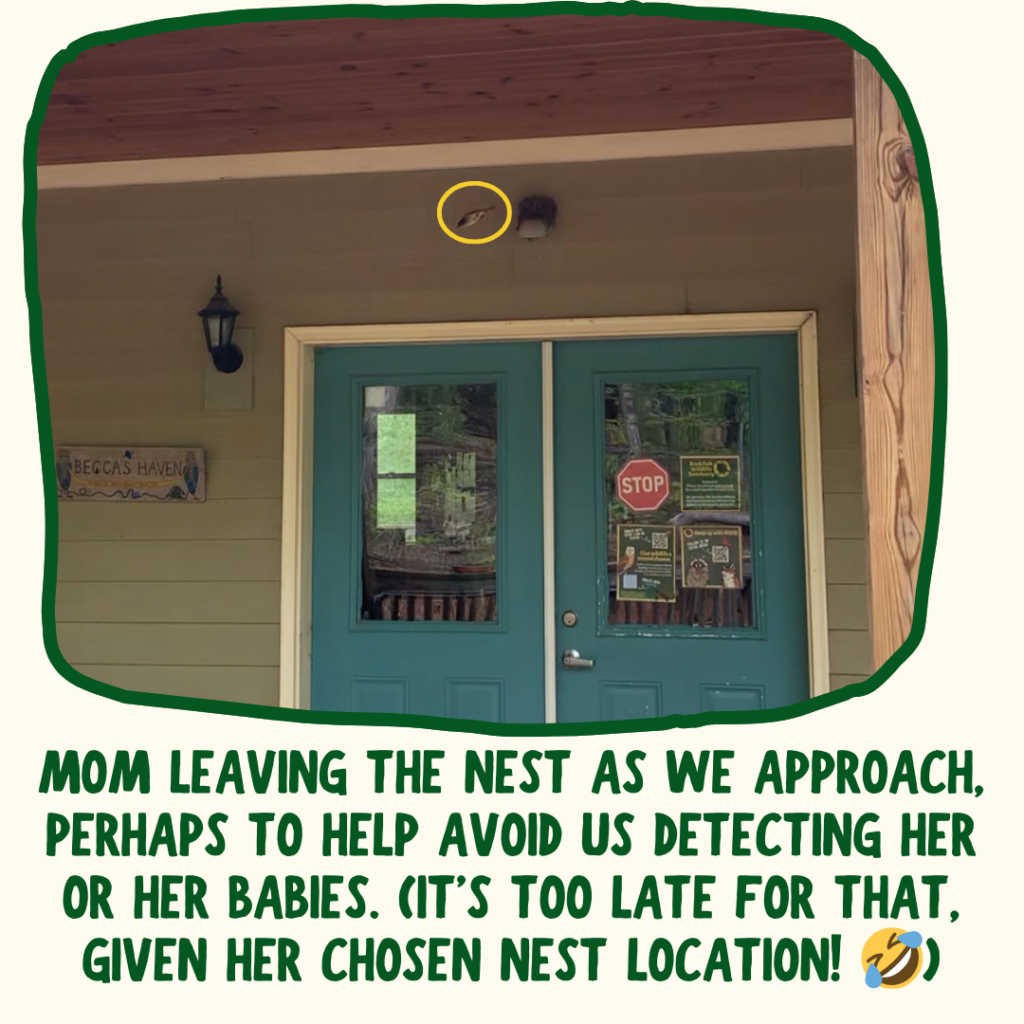
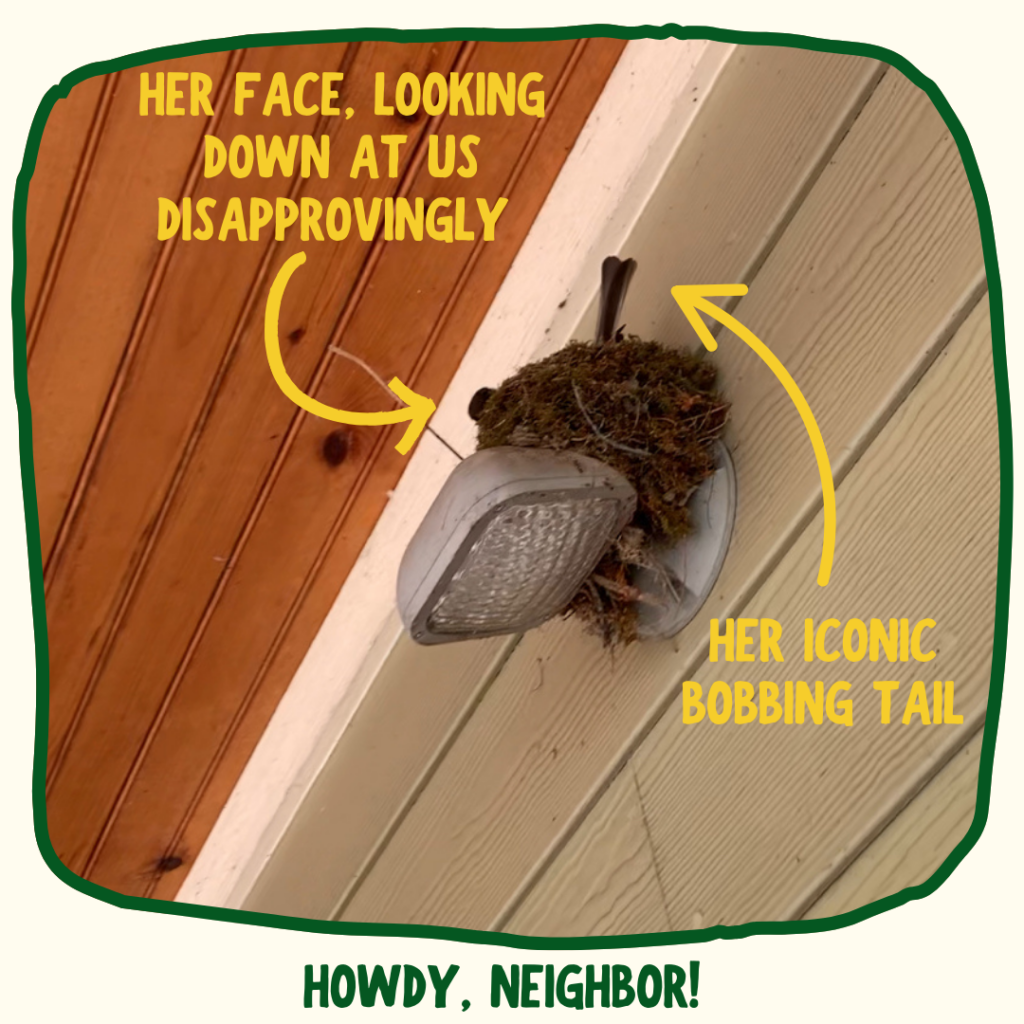
For weeks, these two parents have been moving into (okay, on top of) the porch light overlooking our facility’s main entrance. At first, it seemed like the nest appeared overnight. However, we continued to see two flycatcher-shaped birds flit to and from the light, meticulously adding additional finishing touches like moss, fur, soft twigs, and fresh grass.
Once their nest construction wrapped up, we were pleased to take a peek and see that there were five eggs in the nest! 🪺 Though perched above the busiest part of our organization, mom and dad continue to calmly take turns incubating the eggs, gathering food, and chirping across our pollinator garden.
Our team has been honored by their presence. By choosing to build their nest above the most heavily trafficked part of our facility, we cannot help but feel that the sense of safety we work to create here doesn’t just matter to our patients. It’s recognized by the locals, too! 🥹
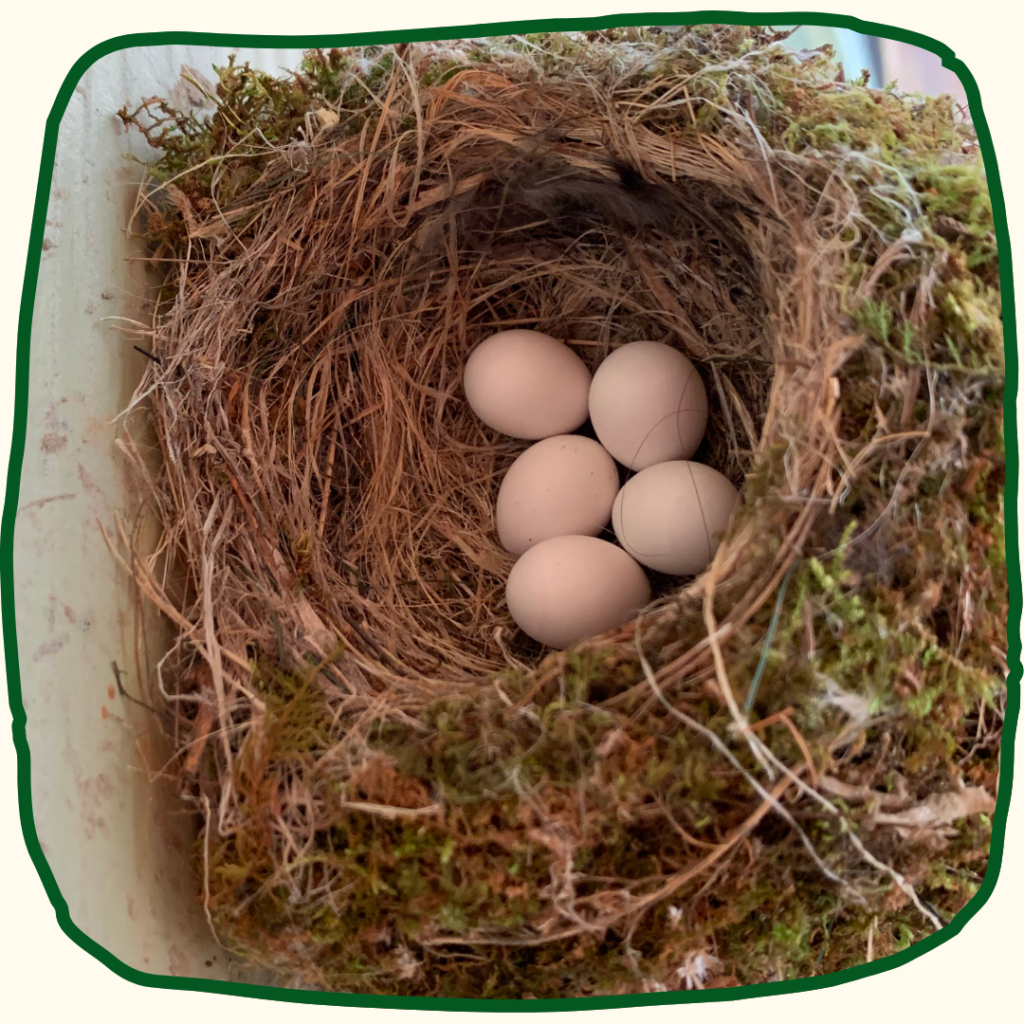
The Fabulous Eastern Phoebe
As we await those babies hatching above our doors—and care for nearly 100 patients inside our doors—we wanted to take some time to highlight the marvelously spunky Eastern Phoebe. We typically admit 10–20 orphaned Eastern Phoebes annually, and they’re always among our favorite bird species to care for.
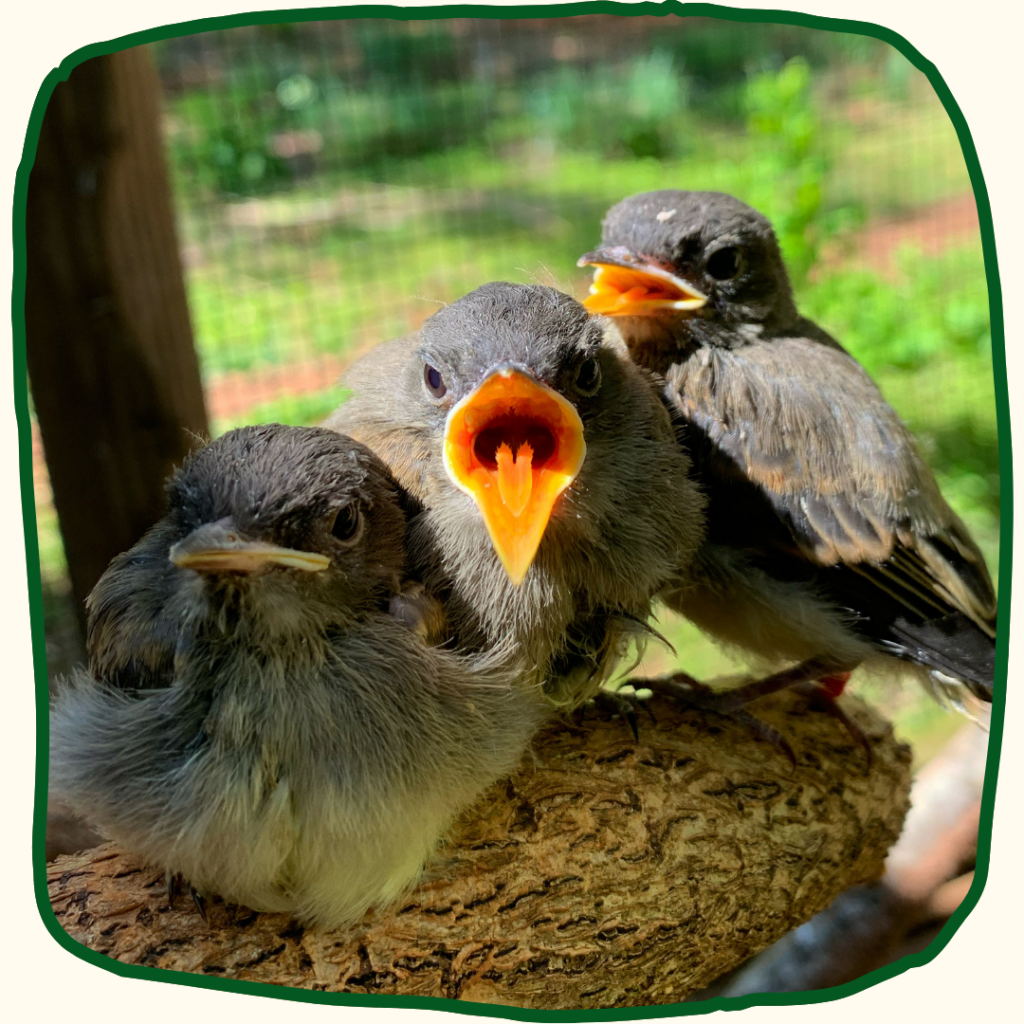
The Eastern Phoebe (Sayornis phoebe) is a little bird with a big history. These sturdy flycatchers played an early starring role in American ornithology! In 1804, a teenage John James Audubon (heard of him?) tied silver threads around the legs of phoebe nestlings to see if they would return to the same spot the next year…and later claimed they did. Though it’s a charming story that represents one of the first bird banding studies, modern science and Audubon’s well-known flair for embellishment suggest it’s probably more fiction than fact. Still, it’s just one reason why Eastern Phoebes have a special place in “bird nerd” circles.
Phoebes are also fan favorites because they pack a ton of personality into that little frame. Their name comes from their distinctively loud, raspy “FEE-BEE!” chirp. As relatively early season nesters, that call is one of the first true signs of spring across the eastern U.S. You might spot them perched low on a branch or fence post, wagging their tails up and down in a signature motion that sets them apart from similar birds.
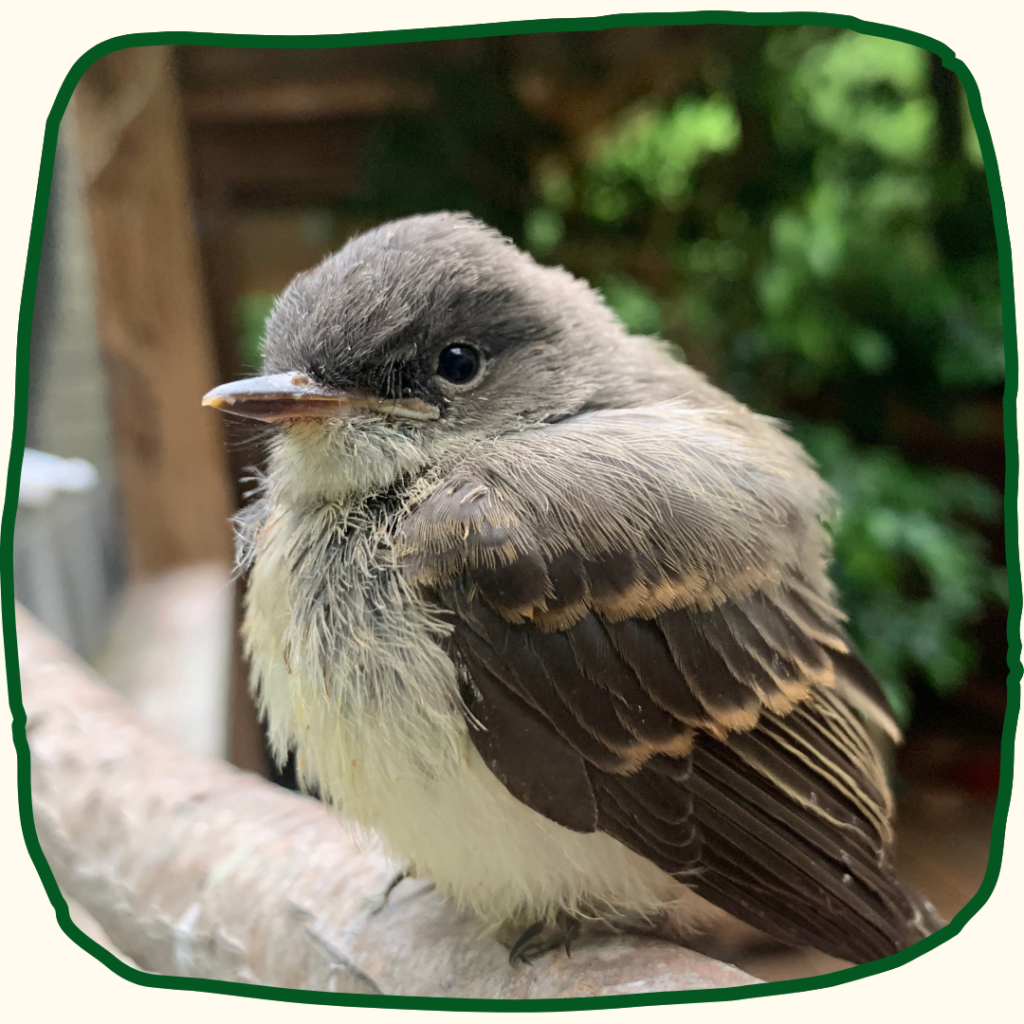
Bobbing Tails, Stealing Hearts
That tail bobbing behavior isn’t just for show. Though we don’t know for sure why Eastern Phoebes wag those long tails, there are a few theories. The prevailing thought is that tail wagging tells predators, “Hey man, I see you!” That way, a hopeful hawk might re-evaluate since its intended prey is clearly aware and will likely be harder to catch.
Another theory is that tail wagging serves as extra camouflage. Phoebes often nest near running water sources and may undulate like their dynamic environment. A bobbing tail breaks up their outline, allowing them to blend in better with swaying branches, a babbling brook, or leaves swirling around. Other theories include it being a predator attractant that can be pulled off without harming the whole bird, like a salamander’s sacrificial tail, or that it is simply a way for phoebes to communicate with one another. Perhaps it’s all of the above!
What do we know for sure? Tail bobbing is an undeniably adorable Eastern Phoebe move.
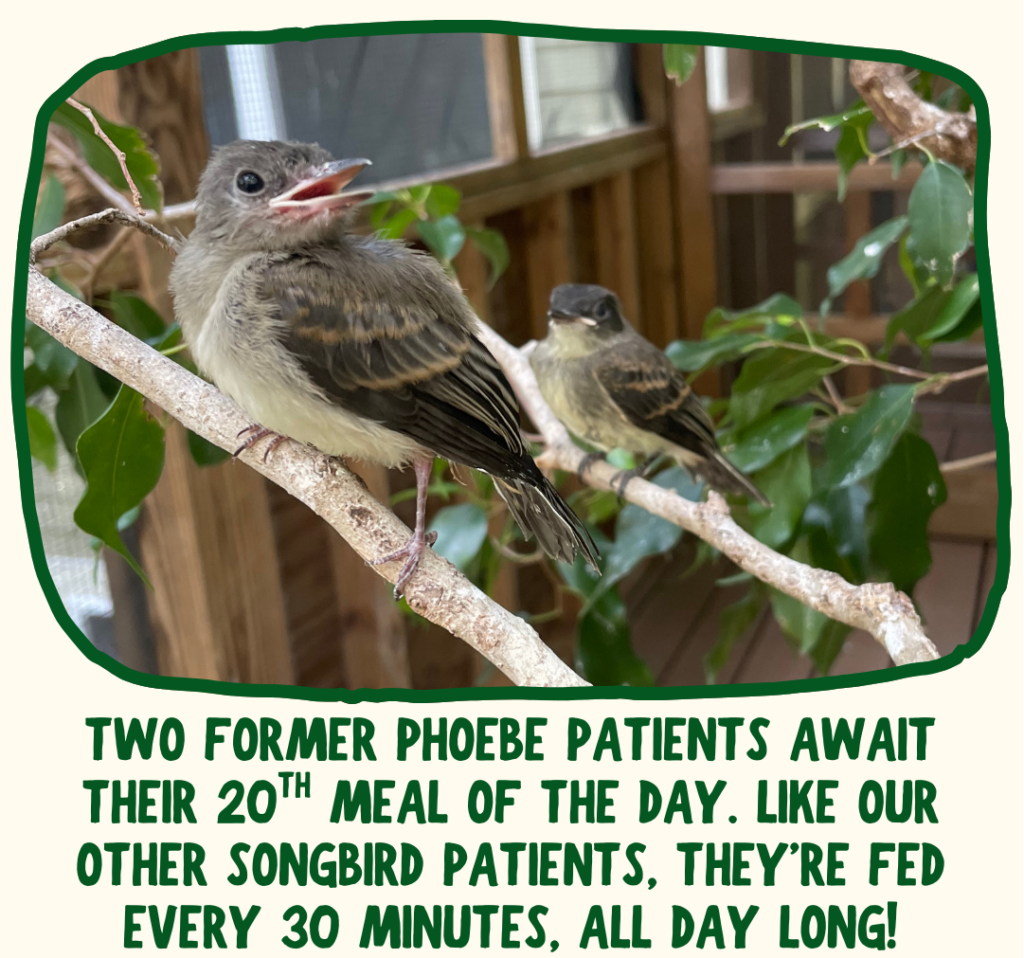
Flying Solo?
Surprisingly, Eastern Phoebes are actually quite solitary compared to other songbird species. They do not form flocks, even while migrating as far as southern Mexico. Instead, they stick to themselves, happily hunting insects on their own and defending their territories with gusto.
During courtship, however, they show a (slightly) softer side. Males return from their overwintering grounds first, taking a couple of weeks to stake out their territory. Once the females start arriving, the males do their darndest to impress! They call loudly, perform aerial maneuvers while singing, and show off exaggerated tail wagging to attract potential mates.
Once paired, they get to work nest-building. Females do the majority of the construction, crafting a sturdy cup of mud, moss, and grass. Our porch phoebes built a textbook nest at RWS: a careful, secure cup tucked snugly against the wall, high enough to deter predators…but luckily still low enough to give us a front-row seat to the next generation’s arrival.
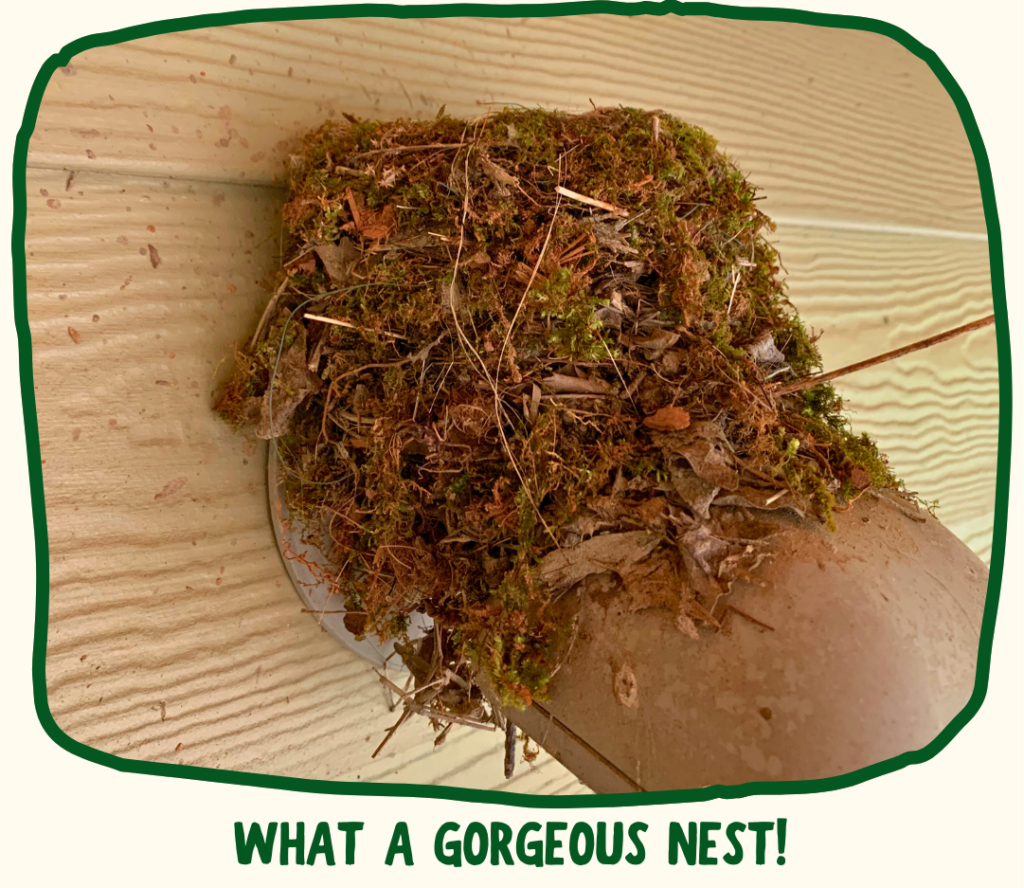
Parenting Styles
Now, phoebes don’t mate for love—it’s strictly utilitarian. Though they might be spotted roosting side-by-side in the early stages of pairing up, that’s about it as far as sweet nothings go. The mated pair spends little time together beyond reproduction, opting to switch on and off incubating the nest. The female will even aggressively chase her mate away from the nest when it’s her turn to incubate the eggs! 😅
After one or two broods, the parents part ways and happily return to their loner lifestyles. However, phoebes often reuse nests the next year…and they might even reuse the same mate. 😆 You know what they say: if it ain’t broke, don’t fix it.
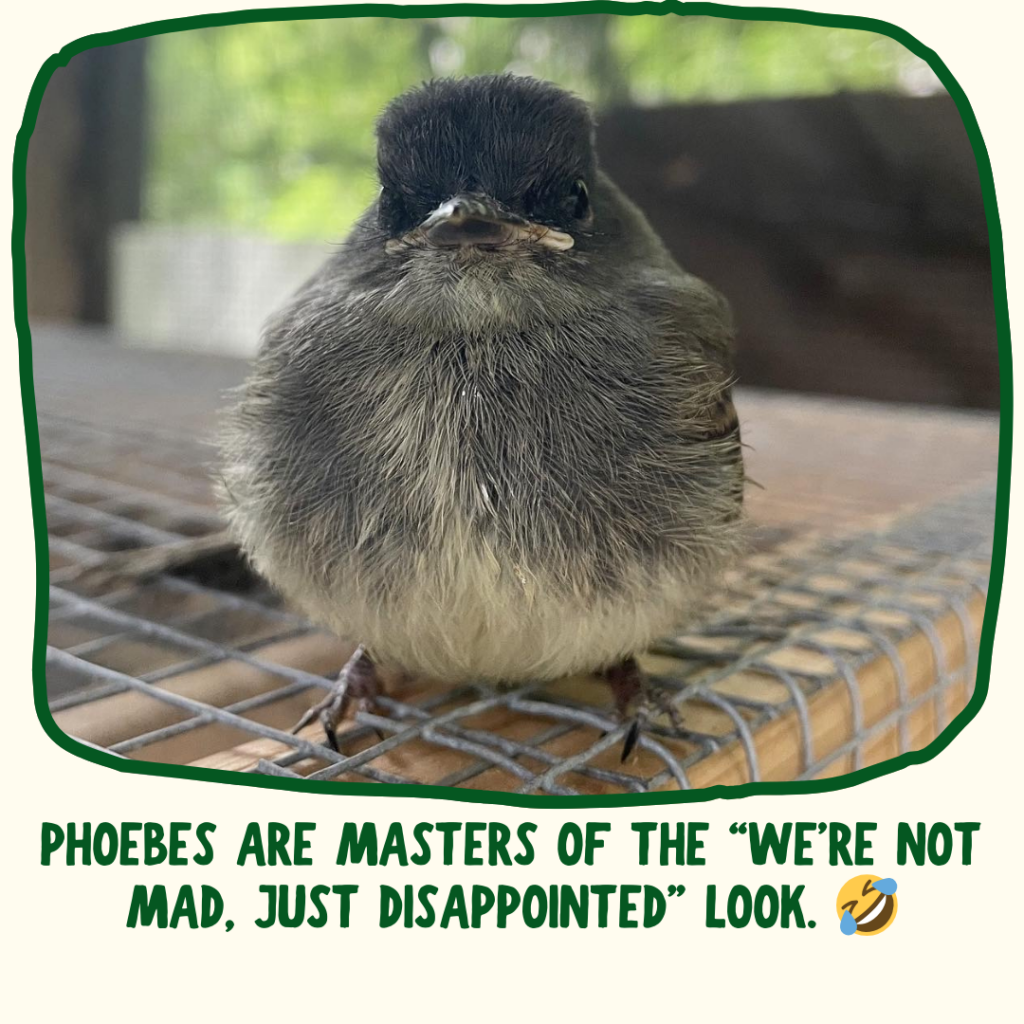
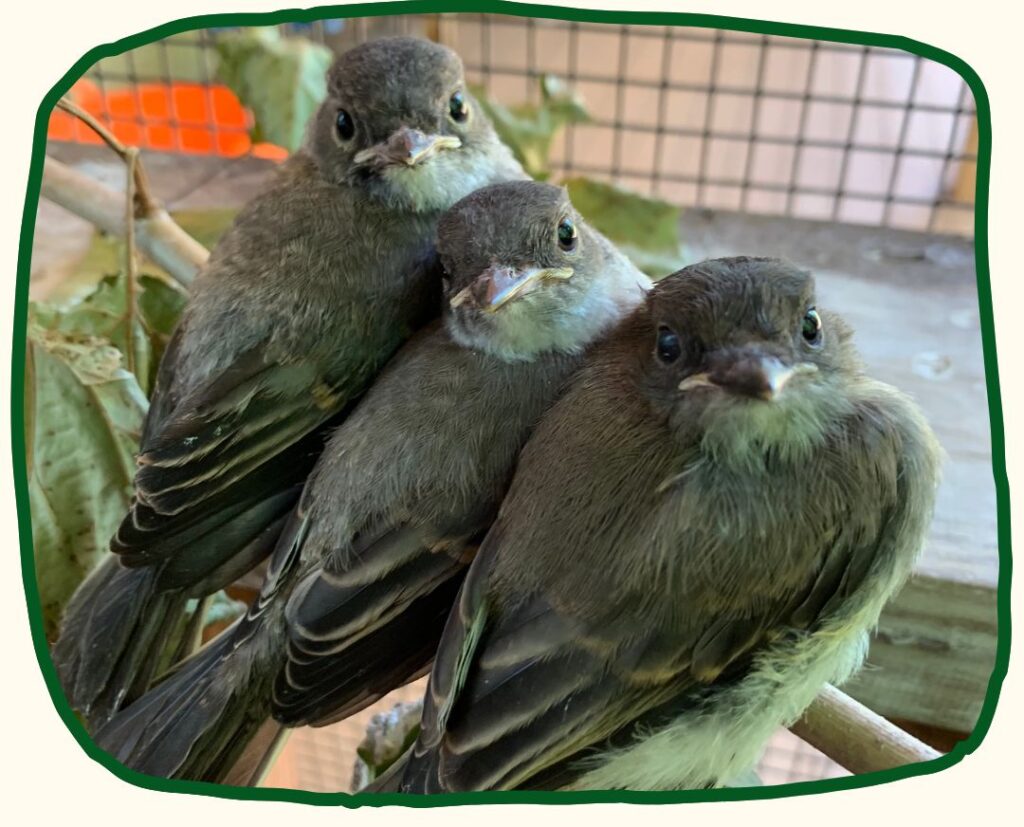
Young phoebes grow up fast. Eggs hatch after about two weeks, and the babies fledge after only another two weeks or so! After just three weeks, they’re independently foraging and ready to take on the world. As obligate insectivores, phoebes are deft at catching prey mid-flight and enjoy chowing down on beetles, moths, bees, grasshoppers, crickets, flies, and more. They may eat up to 70 insects an hour, all day long! In doing so, they help control invertebrate populations and even help assist mammals by chowing down on ectoparasites. Yum, ticks. 😋
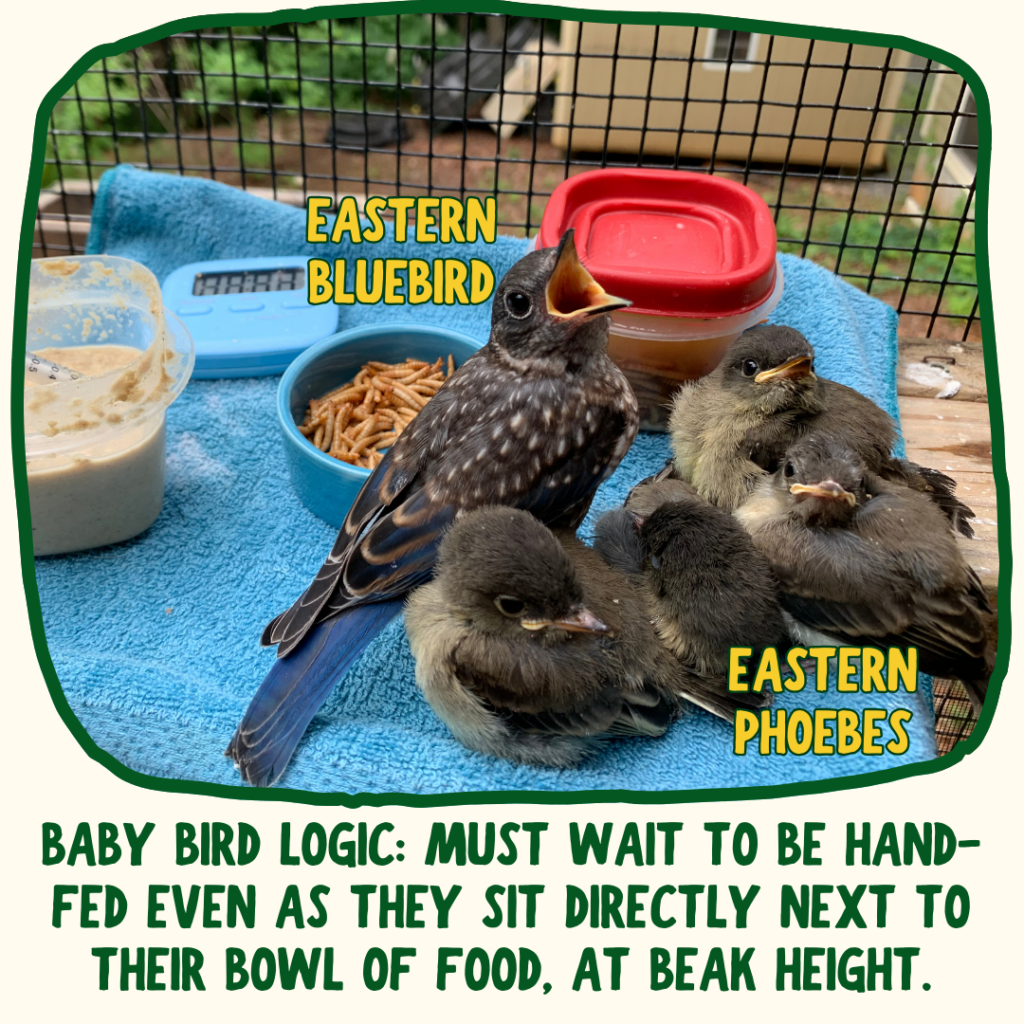
Helping Eastern Phoebes
As we prepare to welcome this season’s baby bird patients, including a dozen or so Eastern Phoebes, we wanted to share a few reminders on how to best support songbirds:
- Skip the pesticides to keep our insect-eating neighbors healthy and happy. 🪲
- Turn off lights at night, whenever possible…especially during spring and fall migration. Birds navigate by starlight while migrating, and artificial lights can disorient them and lead to devastating outcomes. 💡
- Install appropriate window decals to prevent bird collisions. Those hawk decals won’t cut it, sorry! If a bird strikes your window, call a licensed rehabber. We always recommend bringing a window strike patient in for professional treatment, even if they seem okay to you. 🪟
- Keep cats indoors. Leash train your kitty or install a “catio” if you still want your cat to enjoy the outdoors safely. We admit nearly 100 cat-caught patients annually. Don’t let your wild neighbor become one of them. 🐱
Our new porch residents might have picked the busiest spot on the property, but they clearly know a good thing when they see it. Even with all the daily hustle and bustle, mom is sitting tight on her nest (and emphatically telling her mate to buzz off when he shows up). They’re proof that with a little care and respect, people and wildlife really can share space. 🐣
Stay tuned to our social media channels for updates about our porch’s new inhabitants! Thank you for reading another month’s Critter Corner from RWS.

April 29, 2025
Published:
Be the first to comment!